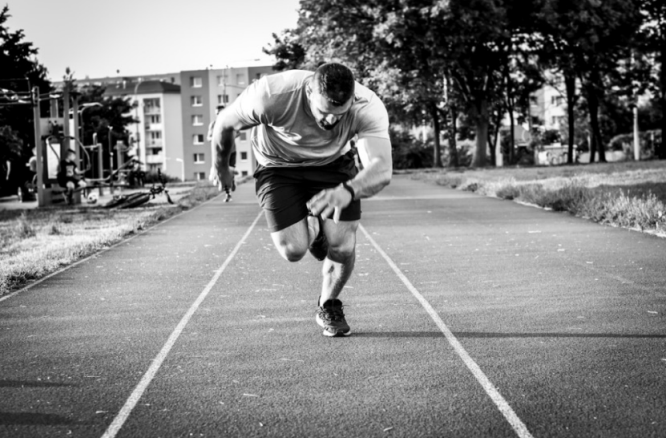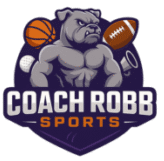In the relentless pursuit of athletic excellence, it is common to focus on pushing harder, training longer, and constantly testing your limits. While dedication and intensity are crucial, many athletes overlook an equally vital component of success: recovery. Proper recovery is not a sign of weakness; it is a strategic and intelligent part of any effective training program. For athletes dedicated to achieving their best, understanding and prioritizing recovery is the key to unlocking sustained performance and preventing
injuries.
At Coach Robb Sports, we guide athletes toward their peak potential by emphasizing a balanced approach to training. This includes recognizing that the gains you make during a workout are solidified during periods of rest and recovery. This article will explore the critical role of recovery in athletic training, outlining how techniques like rest, nutrition, and active recovery can elevate your performance and safeguard your health.
Understanding the Science of Recovery
When you train, you are essentially creating controlled stress on your body. Workouts cause microscopic tears in your muscle fibers and deplete your energy stores. This process is a necessary stimulus for adaptation and growth. However, without adequate recovery, your body cannot properly repair this damage or replenish its energy. Instead of getting stronger, you enter a state of fatigue and breakdown, increasing your risk of injury and diminishing your performance.
Recovery allows for several crucial physiological processes to occur:
- Muscle Repair and Growth: During rest, your body initiates protein synthesis to repair the micro-tears in your muscles, making them stronger and more resilient.
- Energy Replenishment: Recovery enables your body to restore glycogen, the primary fuel source for your muscles, which is depleted during intense exercise.
- Hormonal Balance: Rest helps regulate hormones like cortisol (the stress hormone) and testosterone. Chronic overtraining can lead to hormonal imbalances that hinder muscle growth and overall well-being.
- Mental Restoration: Physical training is mentally taxing. Recovery provides the mental break needed to maintain focus, motivation, and a positive mindset.
Neglecting these processes leads to a condition known as overtraining syndrome, characterized by persistent fatigue, decreased performance, mood disturbances, and higher susceptibility to illness and injury.
Key Pillars of an Effective Recovery Strategy
A comprehensive recovery plan integrates several key elements. By focusing on these pillars, you can create a routine that supports your body’s natural healing processes and maximizes the benefits of your hard work.
- The Foundation: Sleep and Rest
Sleep is arguably the most powerful recovery tool available to any athlete. During deep sleep, your body releases human growth hormone (HGH), which is essential for tissue repair and muscle growth. A consistent lack of quality sleep can severely impede your recovery, compromise your immune system, and negatively impact your cognitive function and reaction time.
Actionable Tips:
- Aim for Consistency: Strive for 7-9 hours of quality sleep per night. Try to go to bed and wake up around the same time each day, even on weekends, to regulate your body’s internal clock.
- Create a Restful Environment: Make your bedroom dark, quiet, and cool. Avoid using electronic devices with blue screens at least an hour before bedtime, as they can interfere with melatonin production.
- Schedule Rest Days: Incorporate at least one or two complete rest days into your weekly training schedule. These days are for minimal physical activity, allowing your body to fully repair and recharge.
- Aim for Consistency: Strive for 7-9 hours of quality sleep per night. Try to go to bed and wake up around the same time each day, even on weekends, to regulate your body’s internal clock.
- Fueling Your Recovery: Nutrition and Hydration
What you eat and drink after a workout is just as important as the workout itself. Proper nutrition provides the building blocks your body needs to repair muscle tissue and replenish energy stores.
Post-Workout Nutrition:
The period immediately following a workout is a critical window for nutrient absorption. Consuming a combination of protein and carbohydrates within 30-60 minutes post exercise can significantly enhance recovery.
- Protein: This macronutrient is vital for repairing muscle fibers. Aim for 20-40 grams of high-quality protein from sources like whey protein, lean meats, eggs, or plant based alternatives.
- Carbohydrates: These are essential for replenishing depleted muscle glycogen stores. Simple carbohydrates can be beneficial immediately post-workout for quick absorption.
- Hydration: Dehydration can impair nearly every bodily function, including nutrient transport and muscle function. It can lead to fatigue, cramps, and a significant drop in performance.
Actionable Tips:
- Plan Your Post-Workout Meal: Have a protein- and carbohydrate-rich snack or meal ready to consume after your training session. A protein shake with a banana, Greek yogurt with berries, or chocolate milk are all excellent options.
- Hydrate Throughout the Day: Do not wait until you are thirsty to drink. Sip water consistently throughout the day and be sure to rehydrate effectively after training to replace fluids lost through sweat.
- Monitor Your Hydration: A simple way to check your hydration status is to monitor the color of your urine. A pale yellow color generally indicates good hydration.
- Plan Your Post-Workout Meal: Have a protein- and carbohydrate-rich snack or meal ready to consume after your training session. A protein shake with a banana, Greek yogurt with berries, or chocolate milk are all excellent options.
- Protein: This macronutrient is vital for repairing muscle fibers. Aim for 20-40 grams of high-quality protein from sources like whey protein, lean meats, eggs, or plant based alternatives.
- Staying in Motion: Active Recovery
Active recovery involves performing low-intensity exercise following a strenuous workout or on a rest day. This gentle activity helps stimulate blood flow to your muscles, which can reduce soreness, flush out metabolic waste products, and speed up the repair process without adding further stress to your body.
Actionable Tips:
- Cool Down Properly: End every workout with a 10-15 minute cool-down. This can include light jogging, walking, or cycling at a low intensity.
- Incorporate Low-Impact Activities: On your rest days, consider activities like a leisurely walk, a gentle swim, or a yoga session. These promote circulation and flexibility.
- Use Foam Rolling: Self-myofascial release, commonly done with a foam roller, can help release muscle tightness, improve flexibility, and reduce soreness. Spend 10-15 minutes foam rolling major muscle groups after a workout or on rest days.
- Cool Down Properly: End every workout with a 10-15 minute cool-down. This can include light jogging, walking, or cycling at a low intensity.
Integrating Recovery into Your Athletic Life
Treating recovery with the same seriousness as your training is a hallmark of an intelligent athlete. It requires planning and discipline, but the rewards are substantial. By listening to your body and providing it with the rest and fuel it needs, you build a foundation for long-term athletic success.
At Coach Robb Sports, we are dedicated to providing athletes with the knowledge and support needed to perform at their best. A well-designed recovery protocol is a nonnegotiable part of that equation. It protects you from injury, enhances your performance, and ensures you can continue pursuing your passion for years to come. Start prioritizing your recovery today and experience the difference it makes in your athletic journey.










